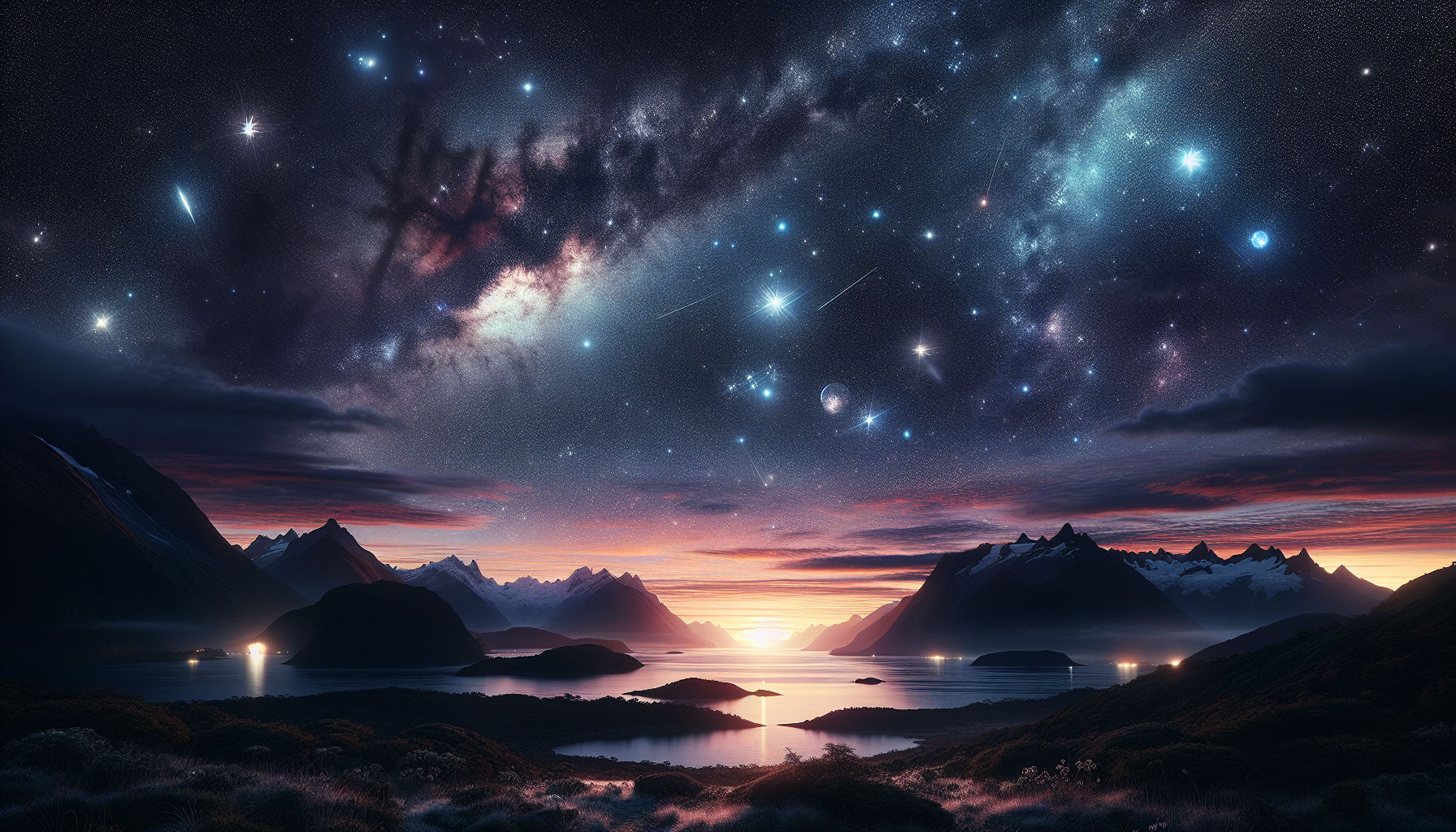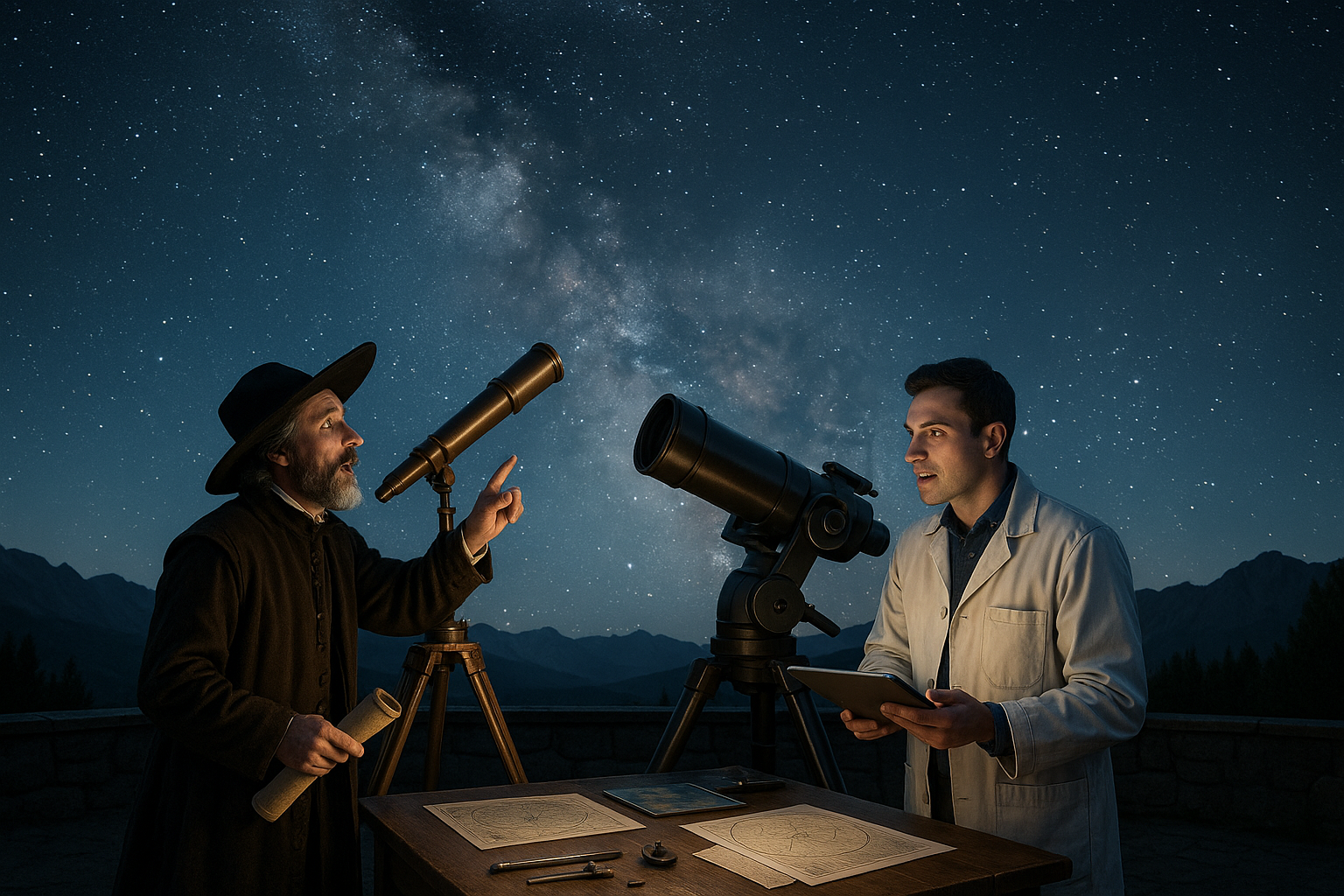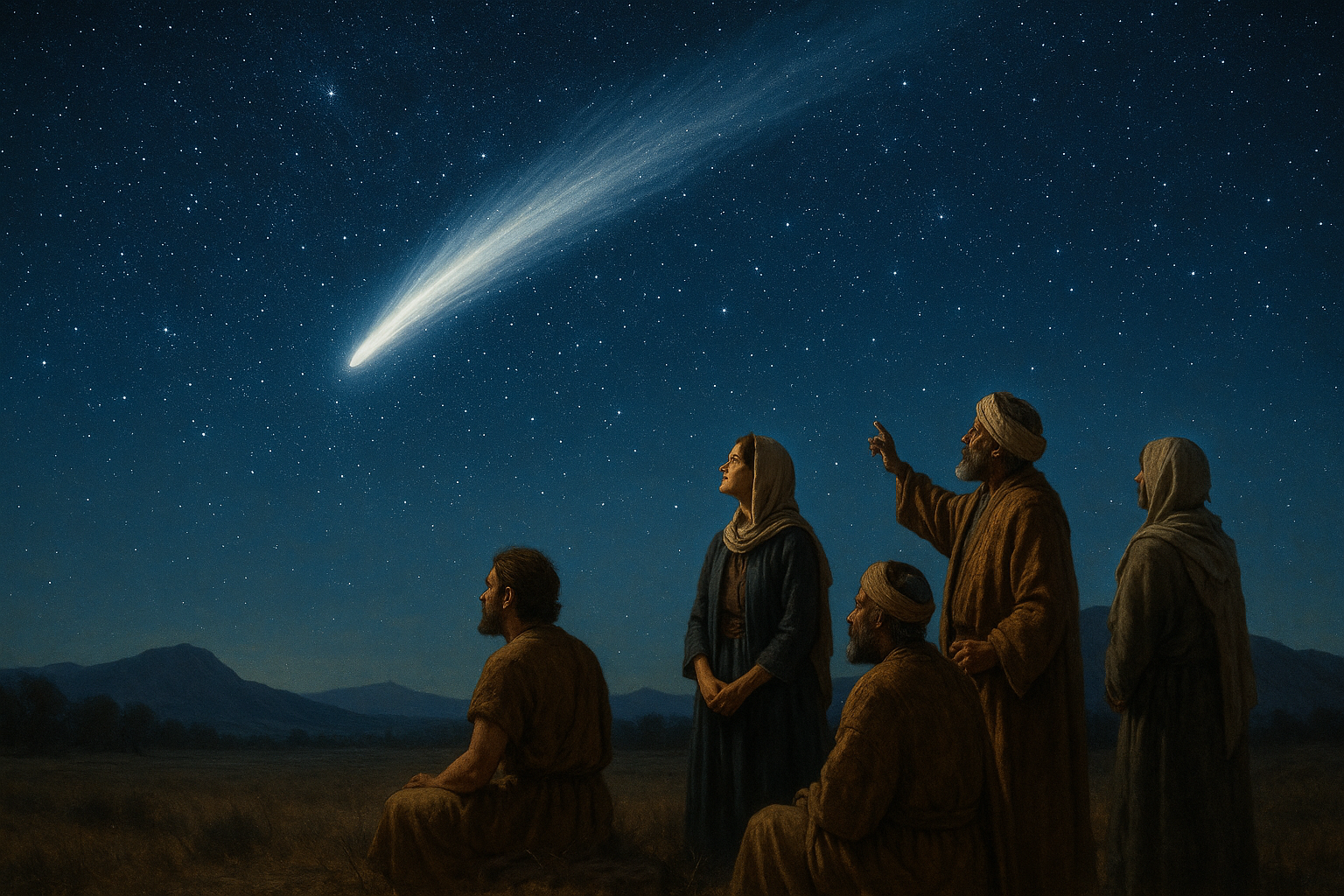In the grand tapestry of the cosmos, few phenomena capture the human imagination quite like the ethereal dance of the stars. As the Earth pirouettes through its annual journey around the Sun, the night sky undergoes a mesmerizing transformation, unveiling an astronomical pageant that has captivated humankind for millennia. This celestial choreography is marked by the seasonal rising of stars, a breathtaking spectacle that not only connects us to the universe but also to ancient traditions and cultures that have revered these stellar displays throughout history. 🌌
Imagine stepping outside on a crisp, clear evening, the air filled with a gentle hush. As the Sun sets, the sky transforms into a deep, velvety canvas, gradually adorned by twinkling lights. Among these myriad stars, certain constellations and stars make their grand entrances at specific times of the year, heralding the changing seasons and offering a visual feast that has been a source of wonder and navigation for sailors, farmers, and dreamers alike. From the radiant glow of Orion in winter to the mystical rise of Scorpio in the summer, each season brings its own stellar spectacles that tell stories written across the heavens. ✨
In this comprehensive exploration, we will journey through the celestial calendar, unraveling the magic behind these seasonal star risings. We will delve into the science that explains why and how these stars appear at certain times, offering insights into the Earth’s axial tilt and orbit. Our voyage will also take us through the rich tapestry of myths and legends woven by ancient cultures, from the Greeks and Egyptians to the Indigenous peoples around the world, who saw these stars as gods, animals, and heroes immortalized in the night sky. We’ll uncover how these celestial events have influenced agriculture, navigation, and even timekeeping, shaping the rhythms of human life.
Prepare to be enchanted as we guide you through a celestial odyssey, providing practical tips on how to best witness these spectacular star risings in all their glory. Whether you’re an avid stargazer armed with a telescope, or simply a curious soul seeking to reconnect with the natural world, this guide will equip you with the knowledge and inspiration to fully appreciate the cosmic ballet overhead. So, grab a blanket, find a quiet spot away from the city lights, and look up – the stars are waiting to share their timeless stories with you. 🌠
The Allure of Seasonal Star Risings
Seasonal star risings have long captivated the imaginations of cultures around the world. These astronomical events, where specific stars become visible at certain times of the year, serve as celestial markers that have guided humanity for millennia. From ancient agricultural calendars to modern astronomical studies, the appearance of these stars holds profound significance. They not only provide a sense of time but also connect us to the vast universe, acting as cosmic milestones in our journey through the seasons. The fascination with these star risings lies in their predictability and the myths they have inspired, weaving them into the very fabric of human history and culture.
One of the most celebrated seasonal star risings is that of Sirius, the brightest star in the night sky. In ancient Egypt, the heliacal rising of Sirius, which coincided with the annual flooding of the Nile River, was crucial for agriculture. This event marked the New Year and was seen as a time of renewal and prosperity. Similarly, other cultures, such as the Maori in New Zealand, celebrate the rising of the Pleiades, known as Matariki, as a time to honor ancestors and prepare for the year ahead. These celebrations emphasize the importance of these stars not only as navigational aids but as integral parts of cultural identity and tradition.
The magic of seasonal star risings is not limited to historical or cultural significance. Today, they continue to inspire awe and curiosity. Stargazers and astronomers alike anticipate these celestial events, often planning gatherings or special observations to witness the beauty of these stars lighting up the sky. The predictability of these risings allows for precise planning, enabling observers to appreciate the rhythmic nature of the cosmos. Whether viewed through a telescope or with the naked eye, the experience of witnessing a seasonal star rising is both humbling and exhilarating, reminding us of our place in the universe.
The Science Behind Seasonal Star Risings
Understanding the science of seasonal star risings involves delving into the mechanics of celestial movements. The Earth’s rotation and its orbit around the Sun play pivotal roles in determining which stars are visible at any given time. As the Earth orbits the Sun, different portions of the night sky come into view, allowing us to see specific stars at certain times of the year. This cyclical pattern creates a natural calendar that has been used by civilizations for agricultural and navigational purposes for thousands of years.
Stars rise and set due to the Earth’s rotation, and their seasonal appearance is due to the Earth’s revolution around the Sun. For instance, the heliacal rising of a star occurs when it becomes visible above the eastern horizon just before sunrise, after a period of being obscured by the Sun’s glare. This event marks the star’s reappearance and can be predicted with great accuracy using astronomical calculations. These predictions allow astronomers to anticipate and observe these risings, contributing to our understanding of the celestial sphere and its movements.
To comprehend the science behind these phenomena, it’s helpful to consider the concept of the celestial sphere, an imaginary sphere that encircles the Earth, with stars appearing to be fixed on its surface. As the Earth rotates, the celestial sphere appears to rotate, causing stars to rise and set. The position of the Earth in its orbit determines which part of the celestial sphere is visible at night. Thus, as we move through the seasons, different stars come into prominence, creating the pattern of seasonal star risings that has fascinated humans for centuries.
Table: Comparing Seasonal Star Risings
| Star | Culture | Significance |
|---|---|---|
| Sirius | Ancient Egypt | Marked the flooding of the Nile and the New Year |
| Pleiades (Matariki) | Maori | Time to honor ancestors and plan for the new year |
| Aldebaran | Persian | Heralded the arrival of spring |
Explore the scientific explanations of these phenomena through engaging visuals by watching the following video: Understanding the Celestial Sphere
Witnessing the Spectacle: How to Observe Seasonal Star Risings
Observing seasonal star risings can be a profoundly rewarding experience, offering a chance to connect with the night sky and its timeless rhythms. Whether you are an amateur stargazer or a seasoned astronomer, witnessing these events requires a blend of preparation, patience, and a bit of luck with the weather. The key to a successful observation lies in understanding the specific timing and location of the star rising, as well as choosing the right conditions for viewing.
Before you set out to observe a seasonal star rising, it’s essential to research the specific star you wish to see. This involves knowing the date and time of its heliacal rising, which varies depending on your geographic location. Numerous online resources and astronomical software can provide precise timings, allowing you to plan your observation down to the minute. Additionally, understanding the star’s position relative to the horizon and its trajectory across the sky can help in selecting the optimal viewing spot, free from obstructions and light pollution.
Once you have your plan in place, the next step is to ensure that you have the right equipment. While many seasonal star risings can be observed with the naked eye, using a pair of binoculars or a telescope can enhance the experience, allowing you to see more detail and perhaps catch a glimpse of other celestial objects nearby. A comfortable chair, a blanket, and warm clothing can also make the experience more enjoyable, especially if you plan to spend an extended period under the stars.
Tips for a Successful Star Observation
- Research the star’s rising time and location for your area.
- Select a viewing spot with a clear horizon and minimal light pollution.
- Use binoculars or a telescope for a closer view.
- Dress warmly and bring comfortable seating.
- Check the weather forecast to ensure clear skies.
Engage with a community of star enthusiasts by watching this informative video on preparing for a star observation event: Stargazing Tips and Tricks
The Cultural Significance of Star Risings Across the World
The cultural impact of seasonal star risings extends beyond their scientific explanations, deeply embedding themselves in the traditions and beliefs of countless societies. Throughout history, these events have served as celestial signals for festivals, agricultural activities, and spiritual ceremonies. The shared experience of observing these stars has fostered a sense of community and continuity across generations, often leading to rich mythologies and folklore.
In many indigenous cultures, the rising of specific stars is tied to oral traditions and ancestral knowledge. For instance, the Aboriginal Australians have a rich tradition of astronomy, where the appearance of stars such as the Seven Sisters (Pleiades) is integral to their Dreamtime stories. These narratives are not only cultural expressions but also practical guides, linking the positions of stars to seasonal changes and resource availability. Such connections highlight the profound understanding of the natural world that these cultures possess, passed down through generations.
Similarly, in ancient Greece, the appearance of constellations like Orion and Scorpius was associated with mythological tales that explained natural phenomena and human behavior. These stories were not merely entertainment but served as moral lessons and reflections on the human condition. The cultural significance of star risings thus transcends time, offering insights into how different societies have perceived and interacted with the cosmos, enriching our understanding of human history and the shared wonder of the night sky.
Immerse yourself in the cultural narratives surrounding these celestial events by watching a documentary on the subject: Star Lore: Myths and Legends of the Night Sky

Conclusion
As we come to the conclusion of our cosmic journey through the breathtaking phenomenon of seasonal star risings, we are reminded of the infinite wonders that the universe holds. This celestial ballet, a testament to the intricate dance of celestial bodies, invites us to look up in awe and appreciation. 🌌
Throughout the article, we’ve explored the fascinating science behind the risings of stars during different seasons. We’ve delved into how the Earth’s tilt and orbit around the Sun create a dynamic backdrop for these spectacular events. The significance of constellations such as Orion in winter or Scorpius in summer has illustrated how cultures across the globe have been inspired by the night sky, weaving these stellar occurrences into their mythologies and calendars.
By understanding the mechanics of these star risings, we not only gain a deeper appreciation for astronomy but also reconnect with a practice that has been a vital part of human history. These stars served as navigation guides for explorers, timekeepers for farmers, and storytellers for societies. The knowledge of when and where these stars appear helps us grasp our place in the cosmos, underscoring the connection between our earthly existence and the vast universe beyond.
The beauty of seasonal star risings extends beyond the scientific. It’s an invitation to pause, to witness, and to reflect on the grandeur of nature. In a world often dominated by the hustle of daily life, taking a moment to appreciate the stars can be a grounding experience. The night sky, with its predictable yet ever-changing patterns, encourages us to slow down and marvel at something greater than ourselves.
It’s crucial to foster this sense of wonder and exploration. Encouraging community events such as stargazing nights or joining local astronomy clubs can provide opportunities for shared experiences and learning. Schools can integrate astronomy into their curricula, sparking curiosity in young minds and cultivating the next generation of explorers and scientists.
Furthermore, in an era where light pollution threatens our ability to see the stars, advocating for dark sky initiatives becomes imperative. Preserving the night sky not only protects our environment but also ensures that future generations can continue to be inspired by the stars.
In closing, the seasonal star risings are more than just astronomical events; they are a reminder of the interconnectedness of our world and the universe. They invite us to be part of a timeless tradition of observation and wonder. As you finish reading, consider stepping outside during the next clear night to witness these celestial wonders yourself. Share your experiences, whether through conversation, social media, or community involvement. Let the magic of the stars inspire you and those around you to explore, learn, and appreciate the beauty of our universe.
Feel free to comment on your favorite star-gazing experiences or share tips on how to make the most out of a night under the stars. 🌠 Encourage others to delve into the enchanting world of astronomy and perhaps, together, we can uncover even more of the universe’s secrets. Thank you for embarking on this stellar journey with us. Keep looking up, for the sky is full of stories waiting to be told and wonders ready to be discovered.
Toni Santos is a visual storyteller and cosmic interpreter whose work illuminates the ancient skywatchers and their prehistoric astronomy—the profound ways early humans observed and revered the heavens before written history. Through a visionary lens, Toni explores how the stars, planets, and celestial cycles shaped myth, ritual, and survival in cultures lost to time.
Rooted in a fascination with archaic observatories, stone alignments, and celestial symbolism, Toni’s creative journey reveals the deep human impulse to understand and harmonize with the cosmos. From lunar phases guiding planting seasons to the sacred paths of the Milky Way, each of his works embodies the awe and knowledge encoded in the night sky.
Combining artistic craftsmanship with archaeological insight, Toni’s pieces evoke the mystery and precision of prehistoric astronomers. His work does more than depict—it channels the timeless dance between earth and sky, bridging ancient wisdom with contemporary wonder.
As the visionary behind Vizovex, Toni shares curated visuals, essays, and symbolic studies that invite others to reconnect with the cosmic heritage written in stone and starlight. His creations are a call to look upward, to listen to the silent stories told by the stars, and to honor the first astronomers who mapped the heavens with reverence and ingenuity.
His work is a tribute to:
The celestial wisdom of prehistoric peoples
The sacred geometry of ancient observatories
The enduring bond between human culture and the cosmos
Whether you’re a stargazer, a scholar of ancient mysteries, or someone captivated by the universe’s earliest storytellers, Toni welcomes you to journey through a space where the sky is both map and myth—one constellation, one ritual, one revelation at a time.




